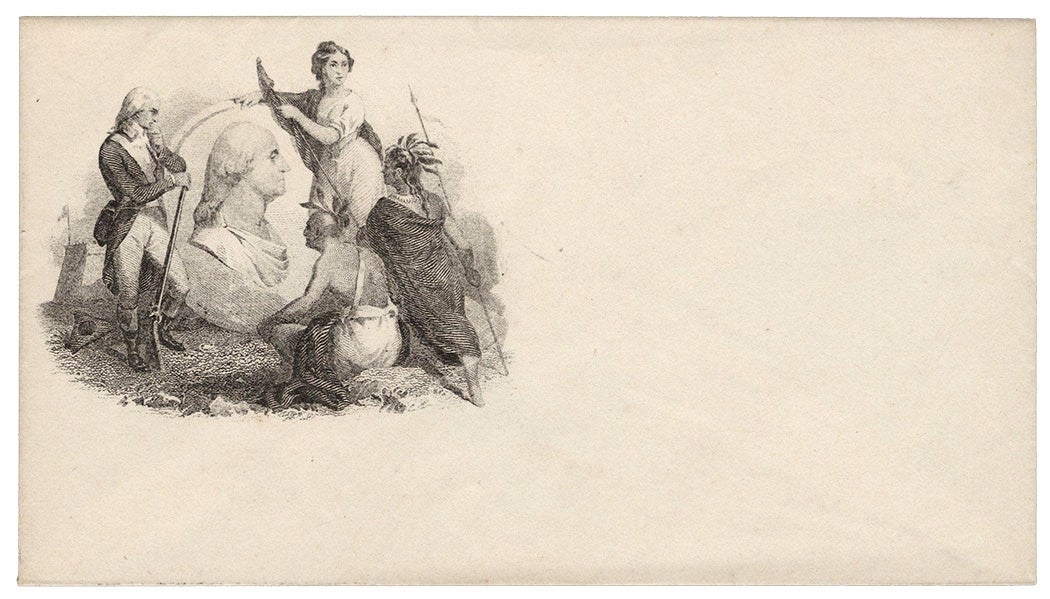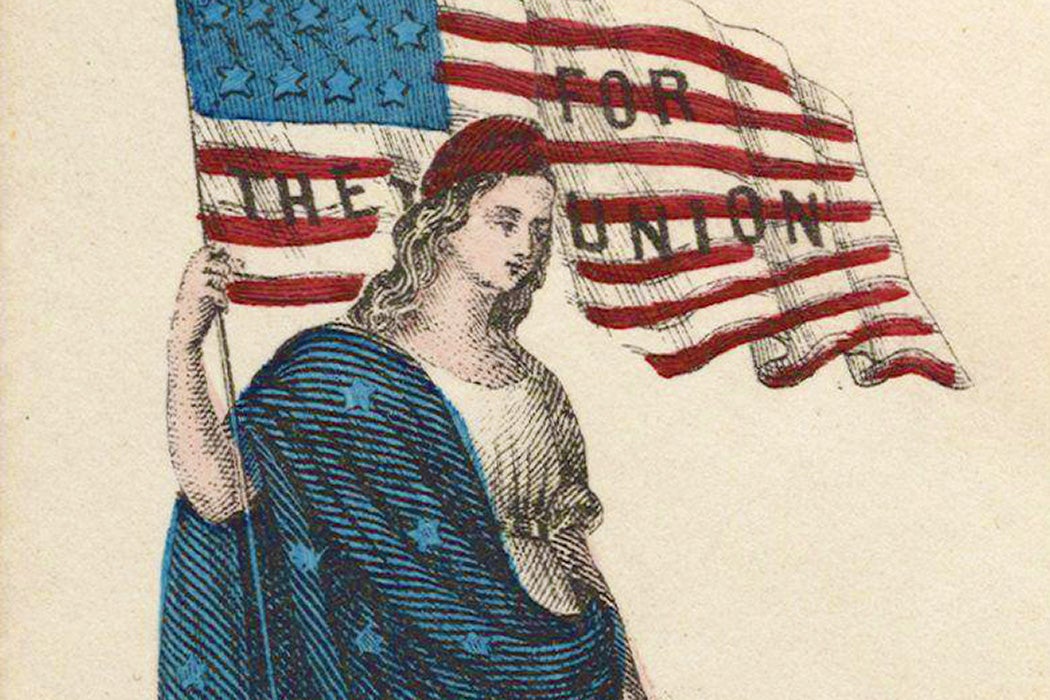In the mid-nineteenth century, marketing via the US Mail didn’t just mean sending folks unsolicited advertisements, brochures, tracts, newspapers, or fliers. It could also mean promoting a cause with illustrated stationery that would show the recipient what you stood for. Even better, it could showcase your allegiances for the benefit of the many post office workers who sorted and delivered the mail, the servants who handled and prepped the mail once it arrived (splaying it out artfully on a silver tray, perhaps), and even the unintended recipients who might espy your envelope if it went astray.
With that in mind, behold the patriotic envelopes collected by Harvey E. Lemmen for the strange and wonderful Civil War and Slavery Collection, carefully curated at the University Library of Grand Valley State University and now made beautifully visible.
In the midst of the Civil War, stationery could just celebrate the Union. But it could also clearly delineate which site the fates were supporting. To wit: admire the way in which an angel protects the American flag while a devil hovers over the seal of Florida on the envelope below. Poor Florida man doesn’t have a chance in this scenario. And the state of Tennessee seems particularly in the hold of Satan thanks to the bright red devil here captured in its full-color glory.
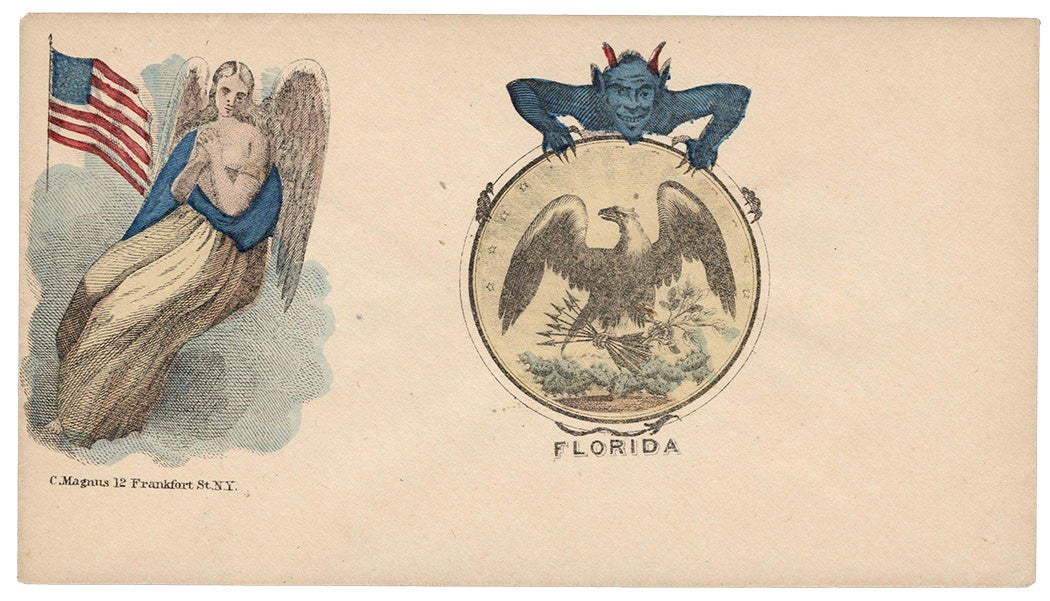
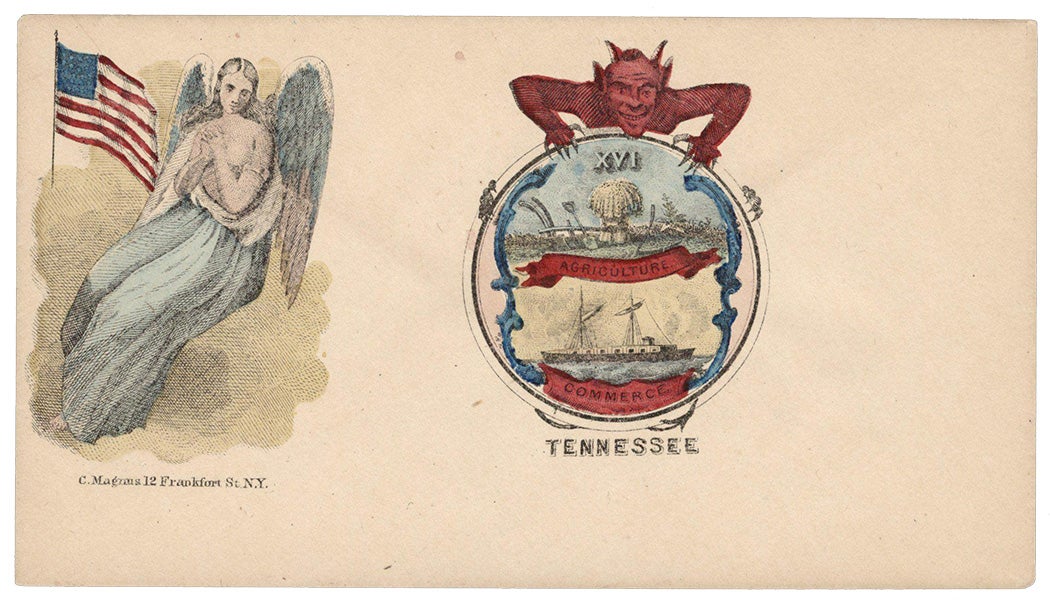
The damning and lauding of various states is evident on many of the envelopes in this collection. Still, one in particular features one of the most harrowing images I have ever seen associated with the Civil War: an invocation of a hangman’s rope, laid out as a skull, with the simple caption “End of Secession.” Perhaps this would be the stationery you would use to send a note to a friend who was fighting on the front lines. Or perhaps your grief and fury would lead you to send this to a Rebel. The message wasn’t ambiguous.
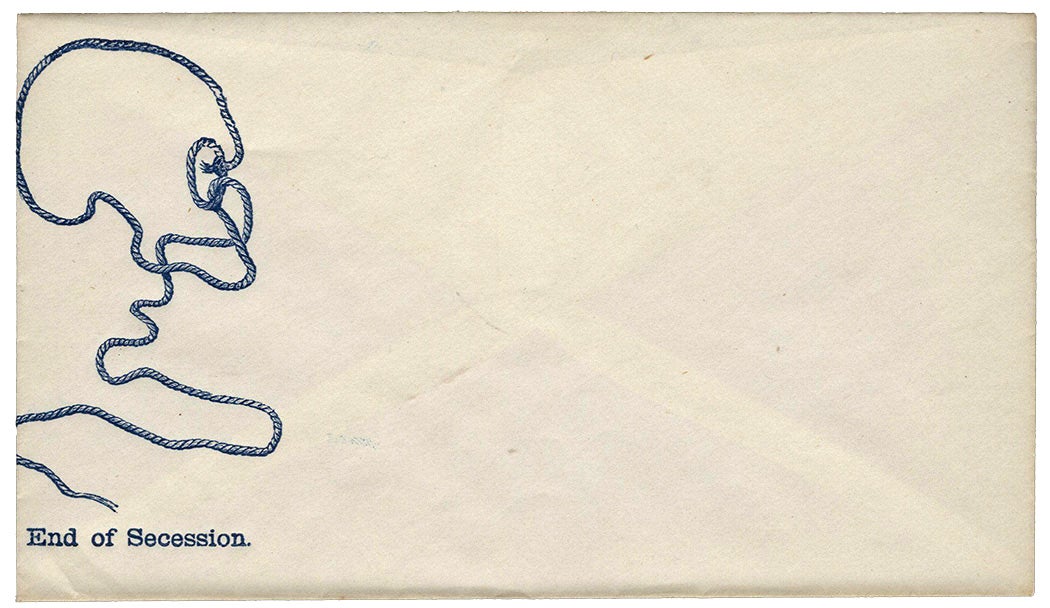
The Grand Valley Collection, however, is far more than just propagandized envelopes—even though that’s the strange and rather delightful core of the collection. The 596 items made available via JSTOR are probably more known for their substantial Abraham Lincoln-abilia. Lemmon was a Lincoln enthusiast and collected anything he could get his hands on related to Lincoln. While some of the materials are punchy bits of ephemera (an envelope with an illustration of Lincoln kicking Jefferson Davis, for example) or somewhat tenuously connected to Lincoln (an Illinois grand jury indictment of someone for selling liquor without a license, signed by Ward H. Lamon, a former law partner of Abraham Lincoln), others are surprisingly poignant or relevant, such as the letter describing Lincoln’s second inaugural address, written almost immediately after it had been delivered and echoing the “long remembered” language so associated today with Lincoln.
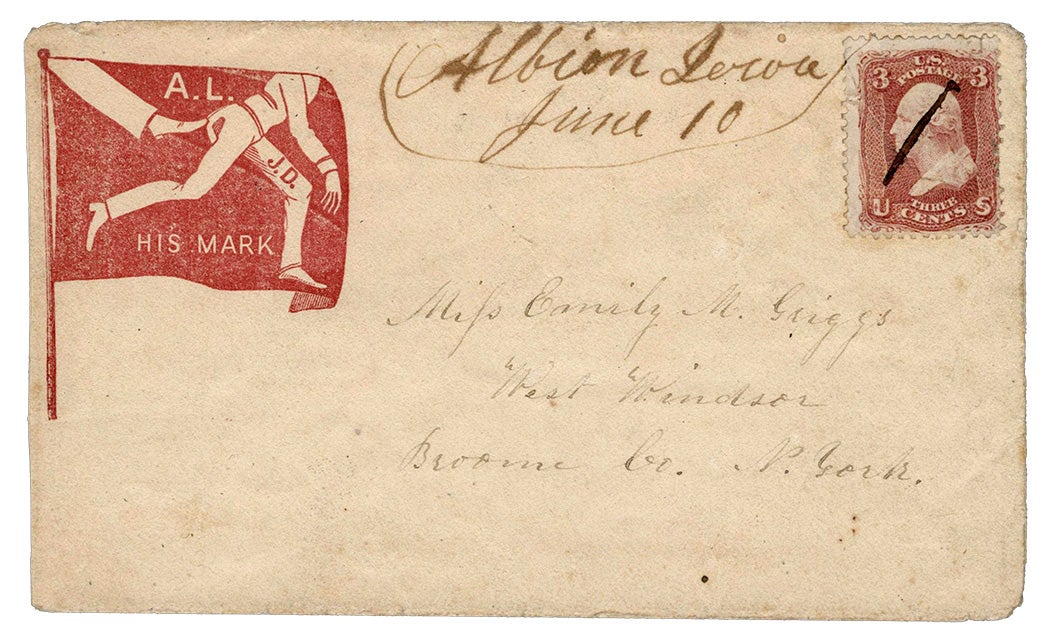
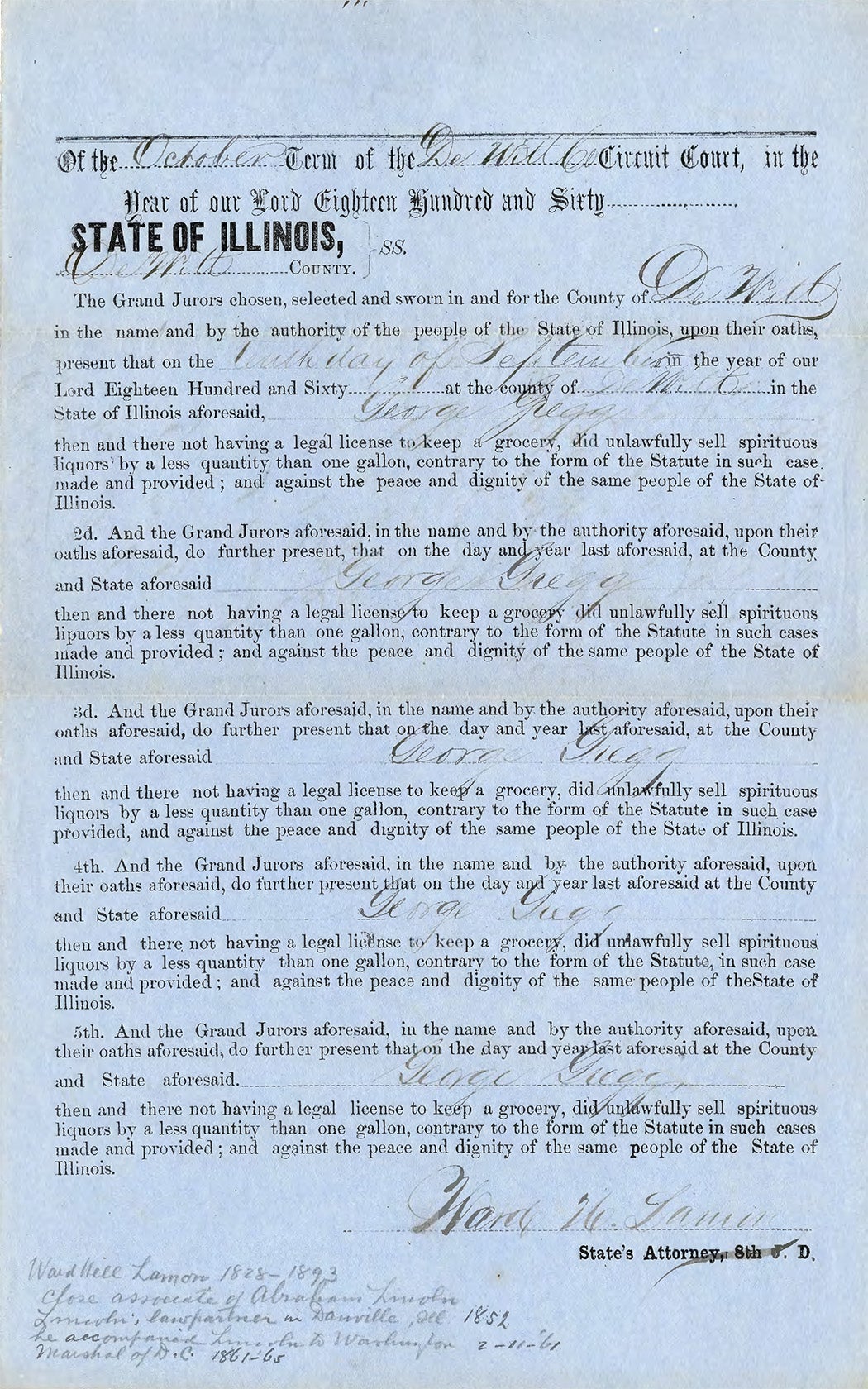

The collection on Lincoln might seem like just that, a vivid archive of a hobbyist, if it weren’t for the material assembled by Lemmen that illustrates the broader and harder world in which Lincoln operated.
Several Civil War-era diaries are wonderfully preserved (with transcriptions, too), and, as true diaries do, they drag you through the minutiae and mundanity of every day until suddenly they thrust the power of the world around them into perspective. The three-volume diary of Michigan physician John Bennitt is clearly the most historically significant item in this cluster of journals; it chronicles his experience as a Civil War surgeon for the 19th Michigan Infantry Regiment. He details surgeries and amputations, all conducted under the terror of attack. “Rebels reported within two miles. In God is our trust.” he wrote on the October 5, 1863, “What hard can befall if he is our friend.”
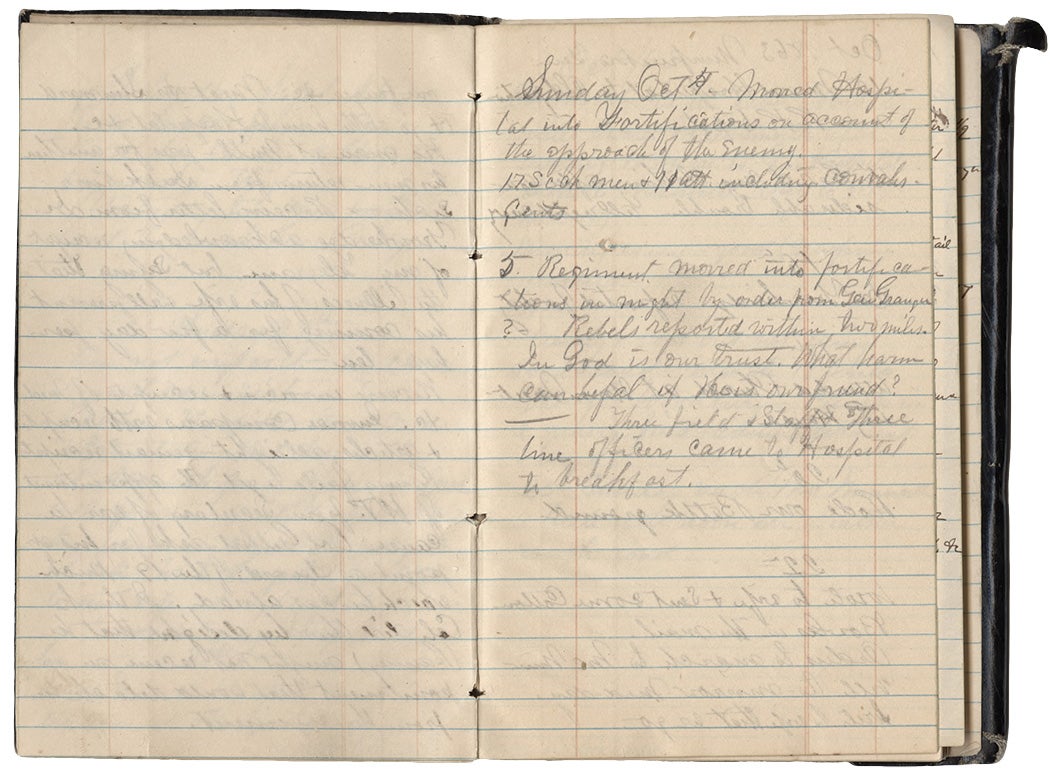
Yet it’s the far less exciting diary of the Ohio fruit farmer, Theodore Peticolas, that more vividly sketches out the less dramatic but equally significant role of duty and sacrifice during those war years for the many Americans far from the front lines. Peticolas tracks the usual farming-related concerns of crops and weather and chores…endless chores. He also, though, tells of his son, Edward, a young soldier discharged from his regiment due to an injury from the war; he arrived home only to die on December 24, 1863. As Peticolas laments on Christmas, “…my only son, Edward was buried. I never knew how much I loved him!” And the farmer’s entry for the next day notes that “all looks blank…violent pain in my heart still. Drizzling.”
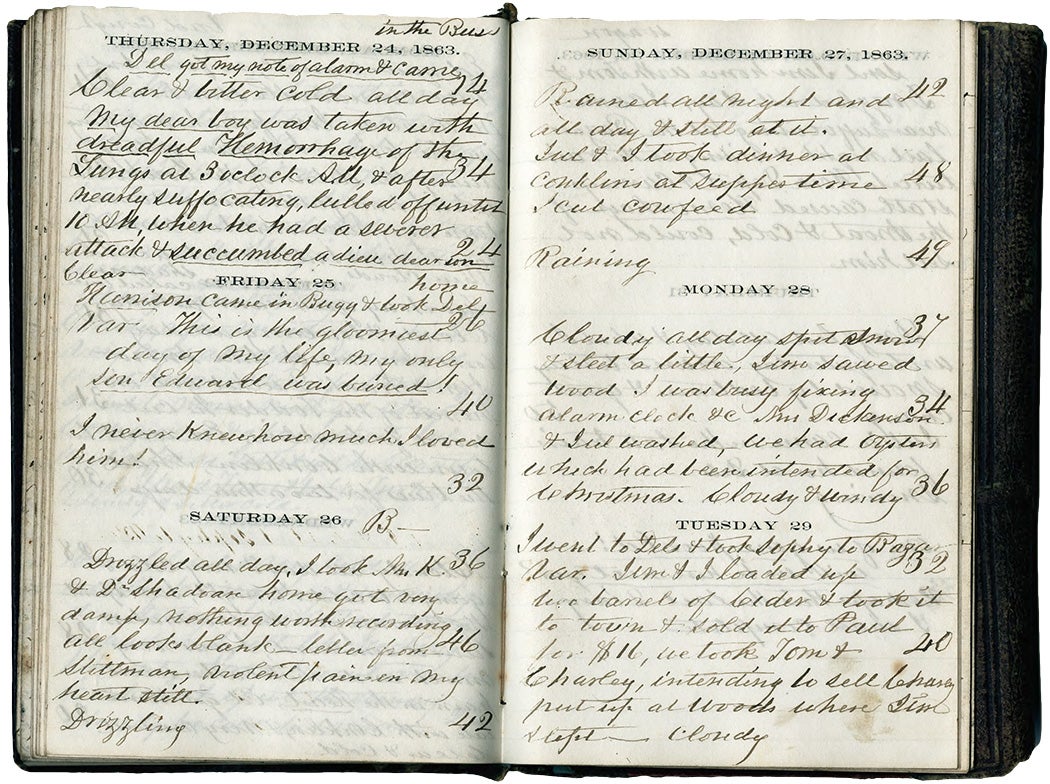
The 1850 estate appraisal of William Bradford Stover of Alabama reminds us of what was genuinely at stake in both Lincoln’s presidency and young Edward Peticolas’s death: Stover’s estate dryly lists the names of men and women with a cash value for their lives, bundled in amongst the animals and furniture items. We see some family groupings there, including “Doctor, Mary and Billy”—clustered together and listed as a set for $1,700. Was this family broken up after probate? There was no legal reason to keep them together.
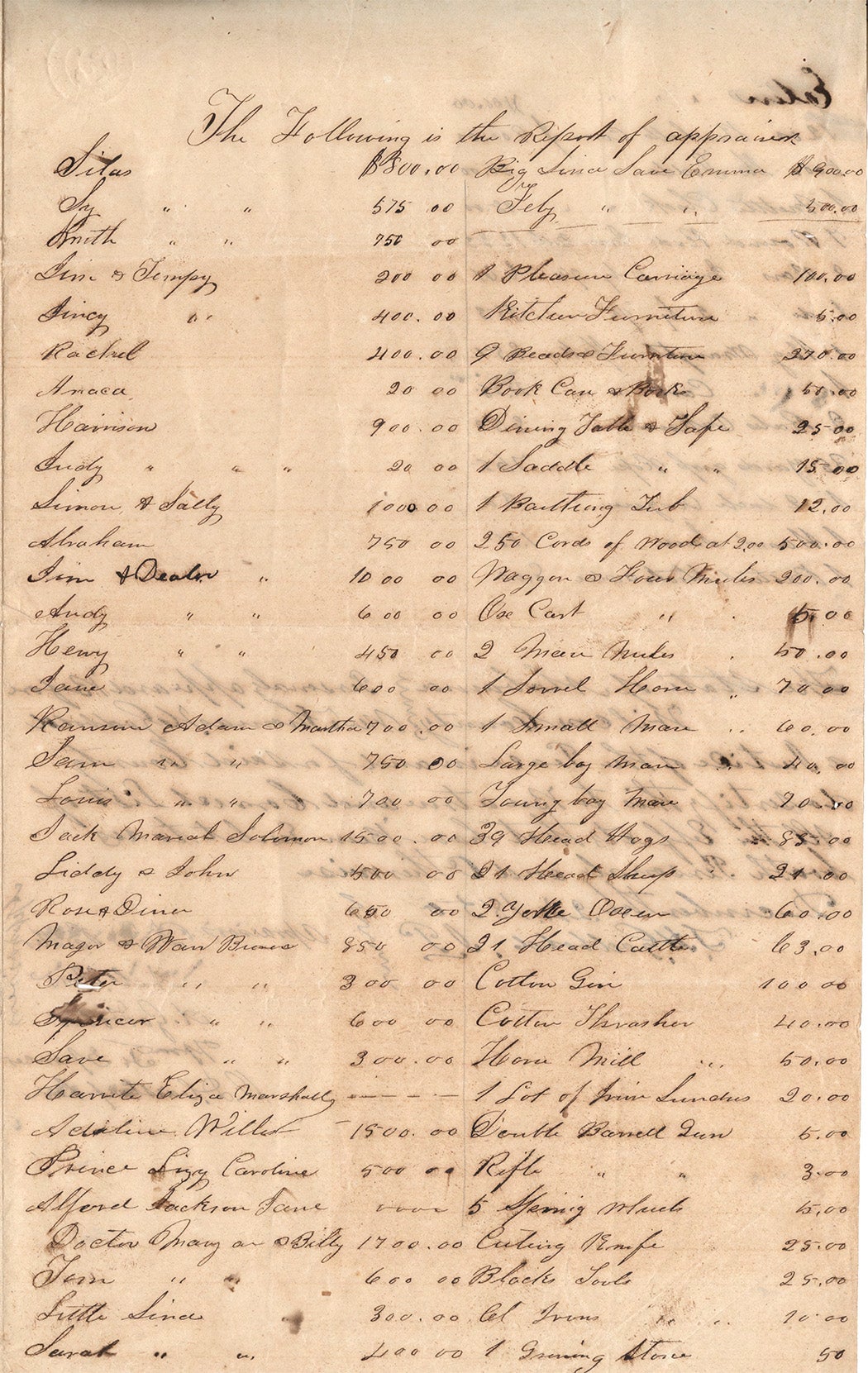
We can’t know what happened to them. Still, the precarity of family ties informally listed in such a document makes clear what worlds these Union soldiers like Edward Peticolas were plunging themselves into—worlds that cared little for the family ties of people listed as chattel. Similarly, the Arkansas estate of James Ricks, appraised in 1860, with its listing of shovels and spades immediately followed by “1 Negro Boy Henry,” allows us to see what the Civil War was really about. Lemmen spent the bulk of his collection on letters from soldiers, Lincoln-adjacent paperwork, and patriotic stationery. But every once in a while, his collection shares with us the grief and horror of those times.
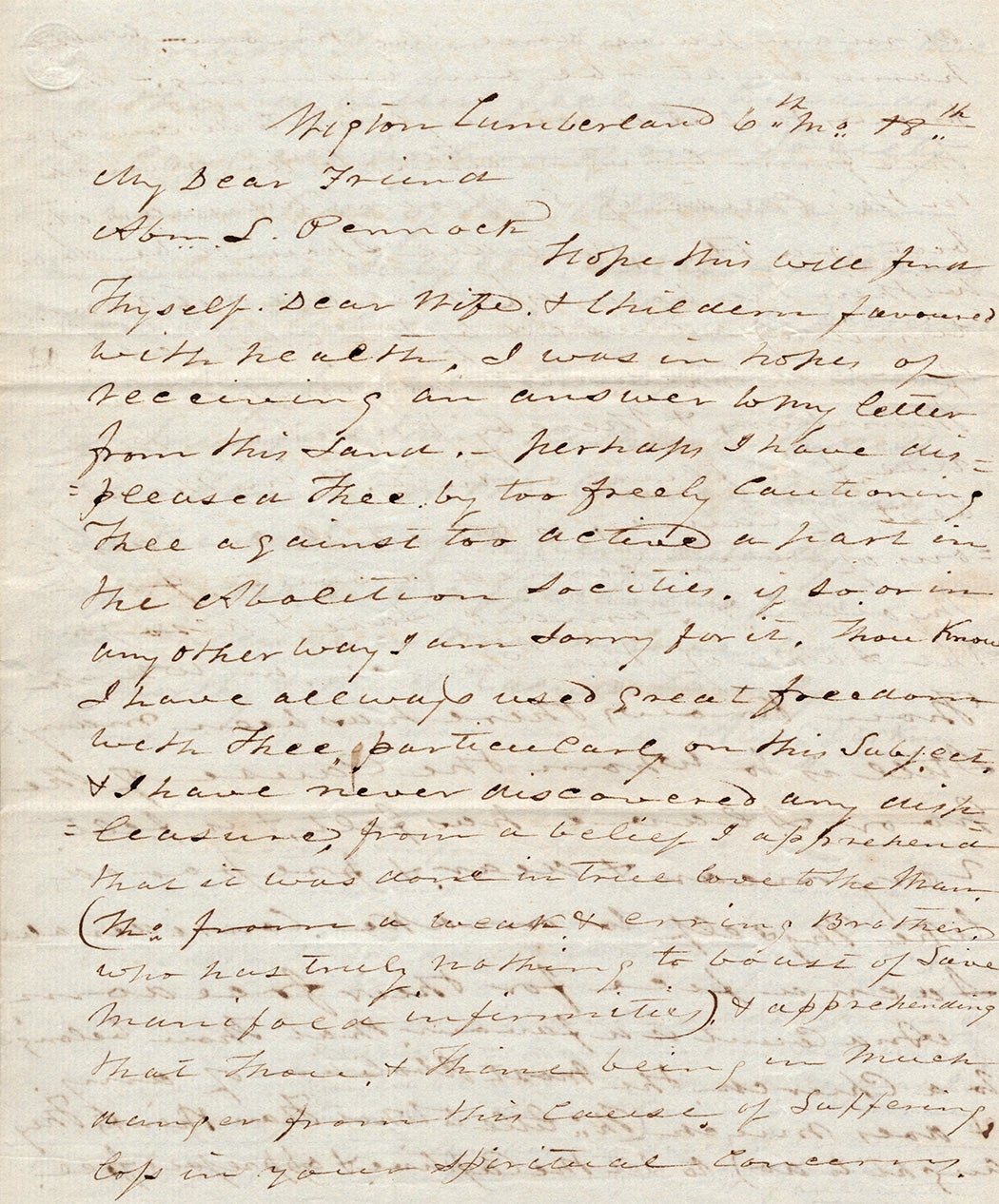
Overall, the collection is marvelously eccentric. Who would think that dozens of envelopes with George Washington’s image would be part of a collection that also features Civil War diaries, Quaker-to-Quaker letters discussing abolitionist groups, and many applications to be a government auditor? People who are rightly thrilled by the Lincoln materials might overlook the less glamorously affiliated papers. But it’s the juxtaposition of these sorts of materials that gives us a broader sense of what the war was and why it mattered.
